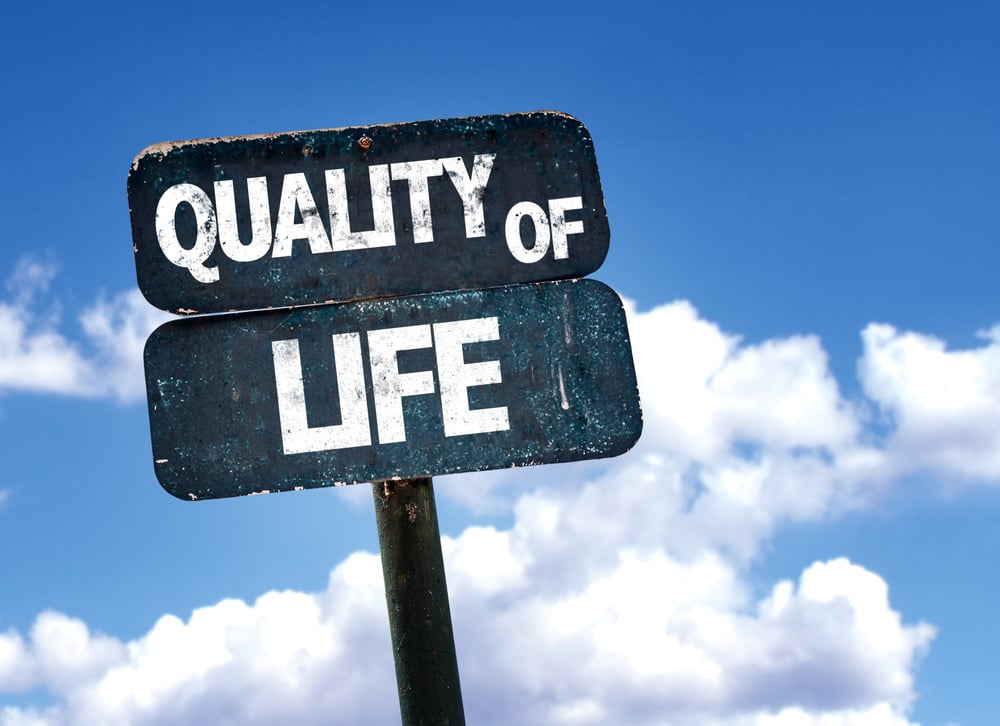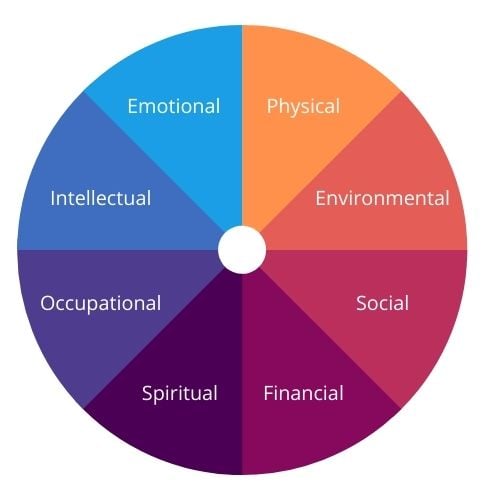
What is Wellness?
Wellness is the act of practicing healthy habits on a daily basis to attain better physical and mental health outcomes, so that instead of just surviving, you’re thriving.
Wellness is composed of eight important dimensions and each of them has a significant impact on living a well-rounded and balanced lifestyle. The eight dimensions of wellness include emotional, physical, environmental, spiritual, social, financial, occupational, and intellectual.
The Wellness Wheel
One way to think of the eight dimensions connecting together is by thinking of a bike wheel. The wellness wheel is like a bike wheel – if all of the spoke (or dimensions) are functioning at optimal levels, the bike wheel rolls along smoothly. However, if one of the spokes (or dimensions) becomes weak, or if the tire loses air, the wheel will run off course.
Consider wellness as the epitome of being healthy in multiple facets of our lives. This encompasses our emotional, physical, occupational, intellectual, financial, social, environmental, and spiritual well-being. These dimensions are intricately interconnected, with each dimension serving as a foundation for the next.

Wellness is Multidimensional

















The Wellness Continuum
One way to understand wellness is to consider health as a continuum that extends from illness to a state of optimal wellbeing.* On one end, patients with poor health engage the medical paradigm to treat illnesses; they interact reactively and episodically with doctors and clinicians who provide care. On the opposite end, people focus proactively on prevention and maximizing their vitality. They adopt attitudes and lifestyles that prevent disease, improve health, and enhance their quality of life and sense of wellbeing. In other words, wellness is proactive, preventive and driven by self-responsibility. The growth of wellness is the extension of this consumer value and worldview.
Wellness is different from healthcare. Our healthcare systems use a pathogenic and reactive approach, focused on causes, consequences, diagnosis and treatment of diseases and injuries. In contrast, wellness is a salutogenic and proactive approach, focused on prevention, healthy lifestyles and the pursuit of optimal wellbeing. Ultimately, a solid foundation for wellness helps us prevent and overcome disease, both at present and in the future.
*The continuum concept is adapted from Dr. Jack Travis’ Illness-Wellness Continuum. Travis is one of the pioneers of the modern wellness movement in the late 1970s.
